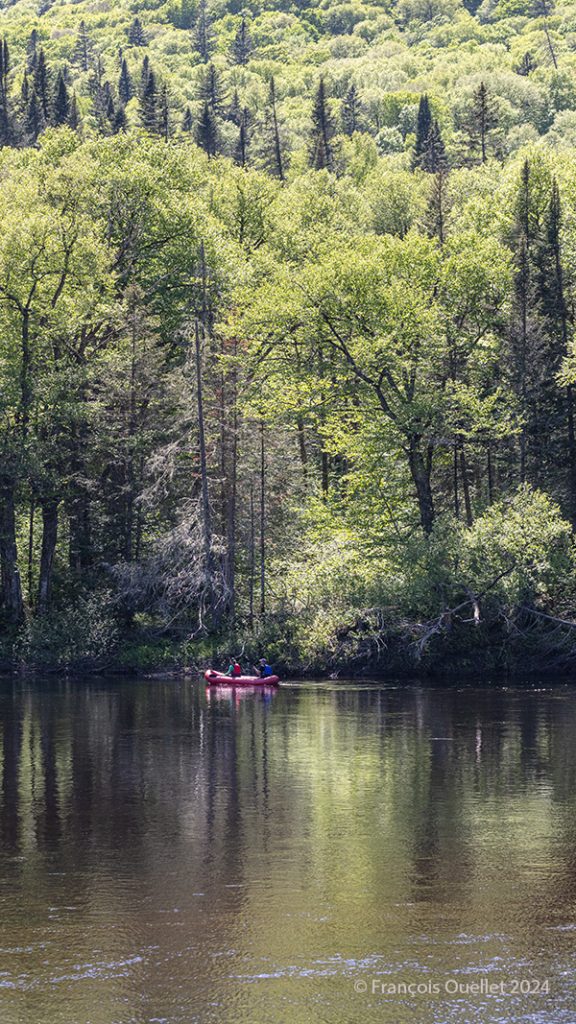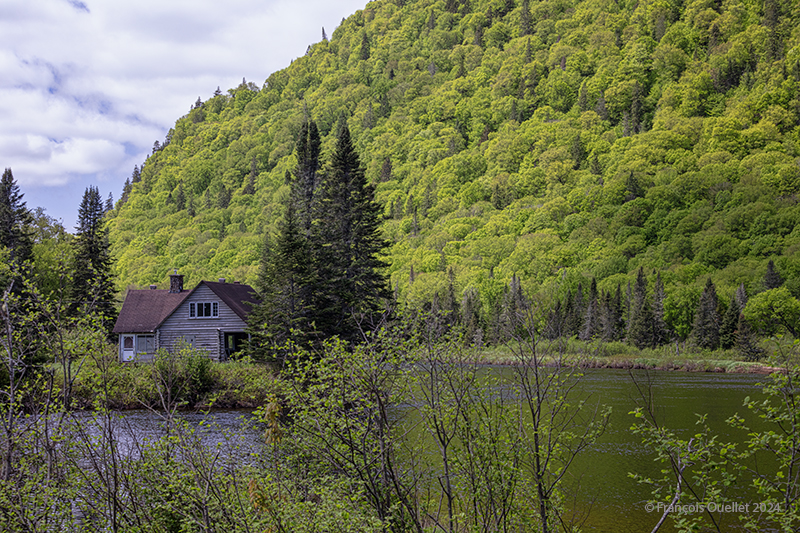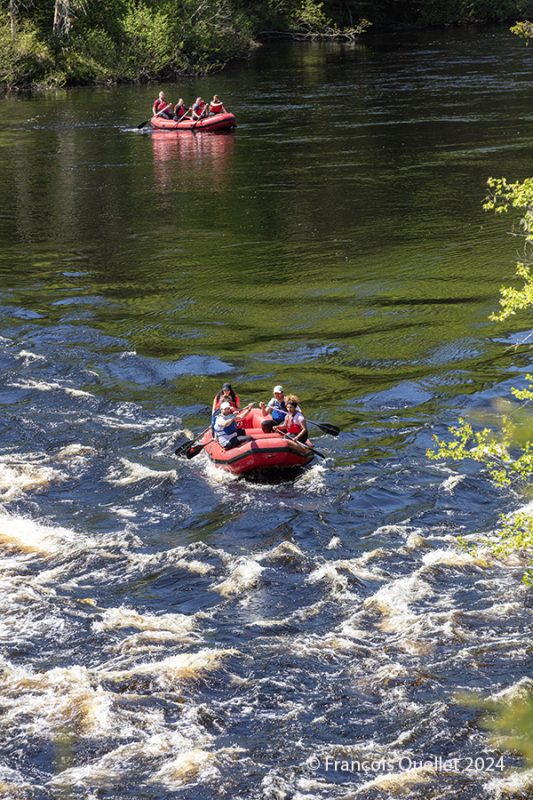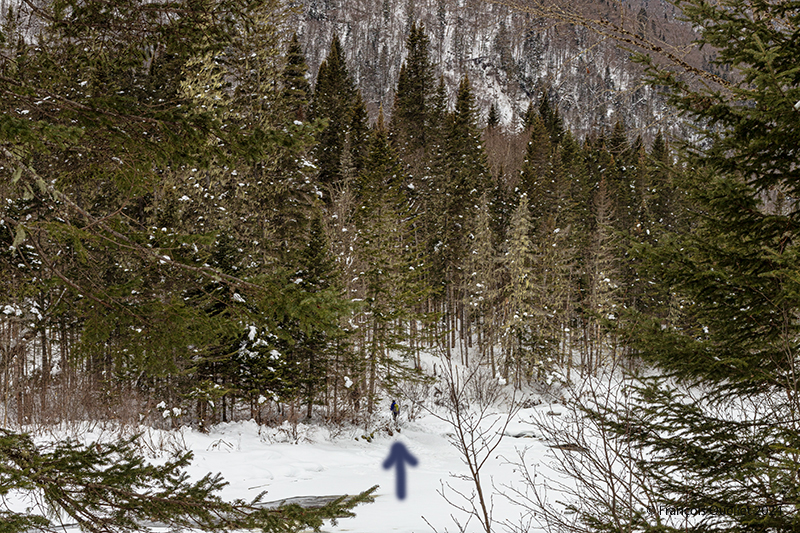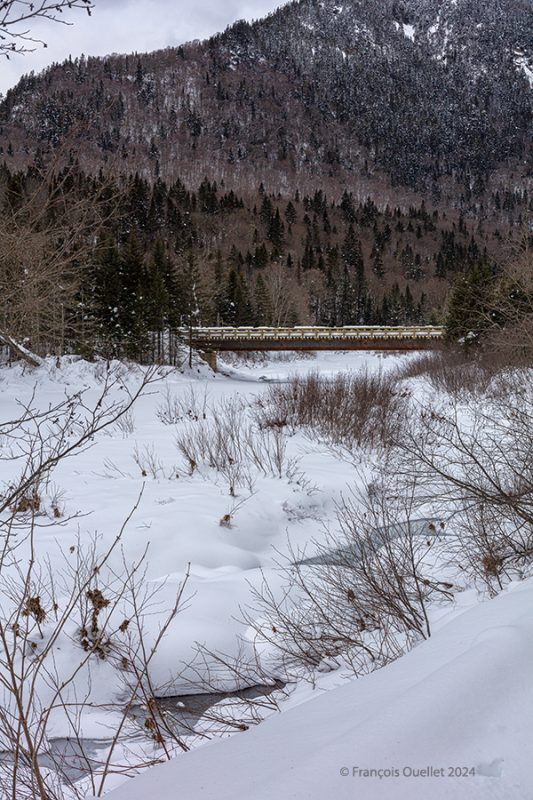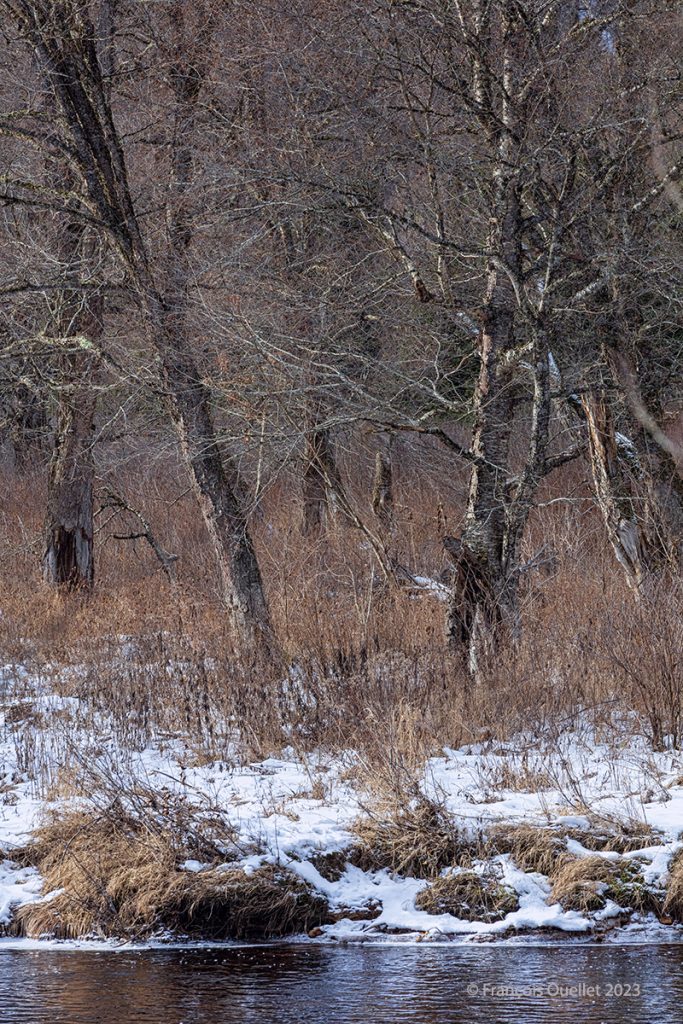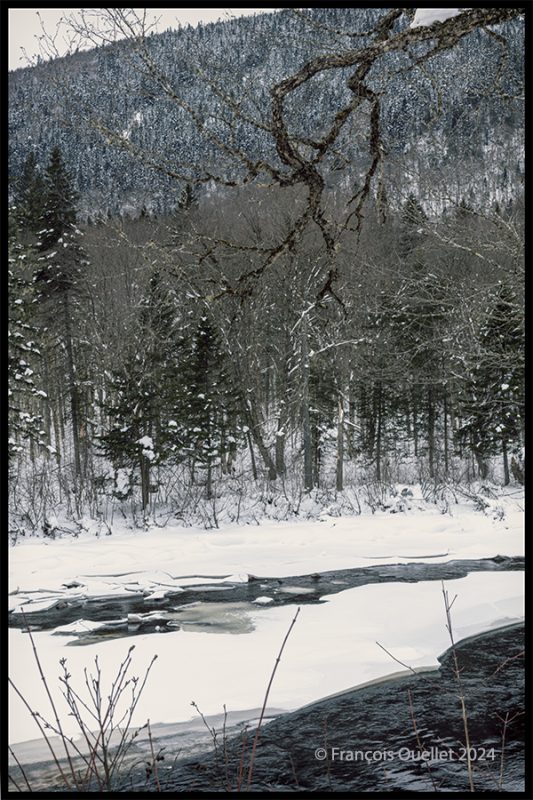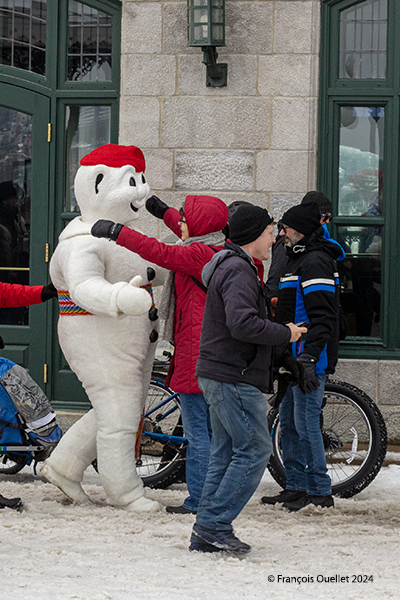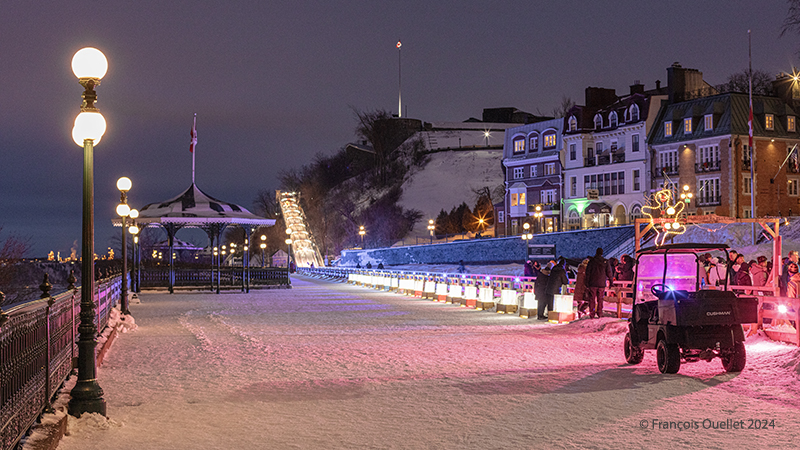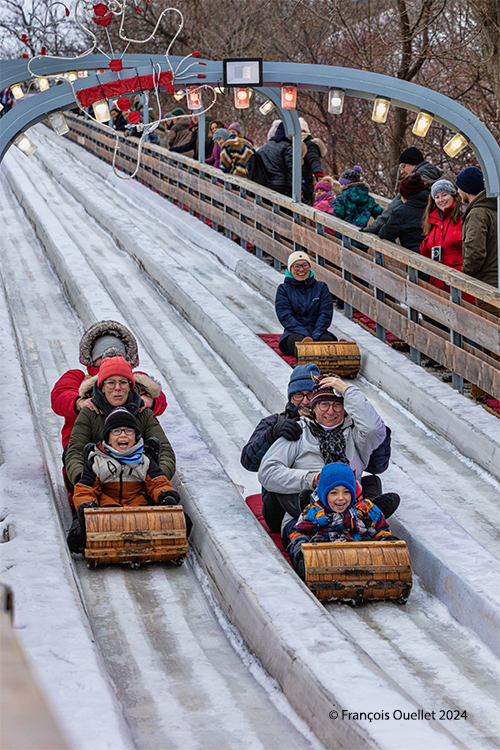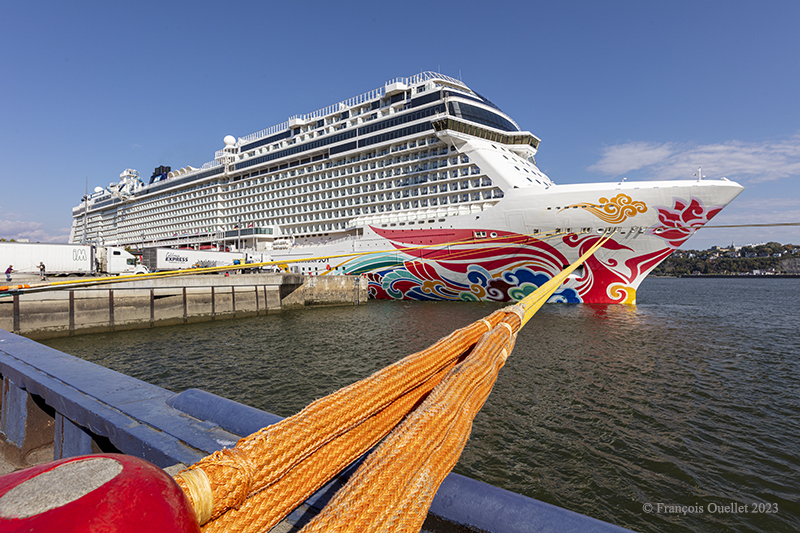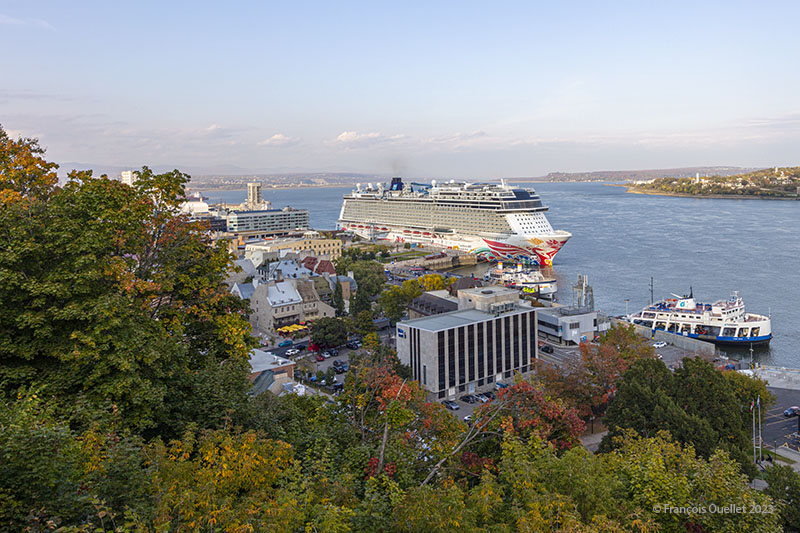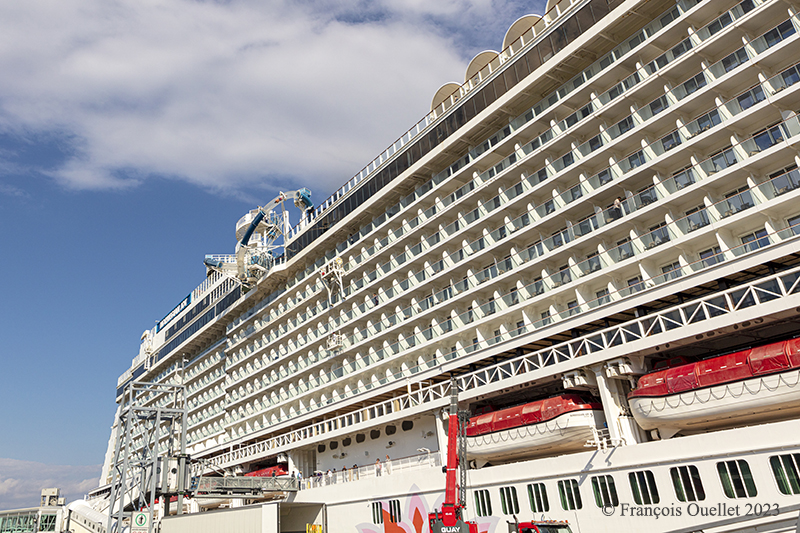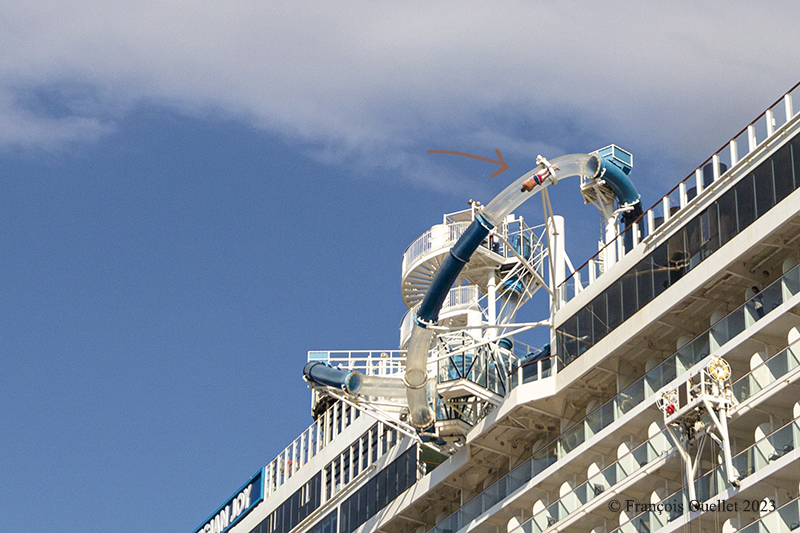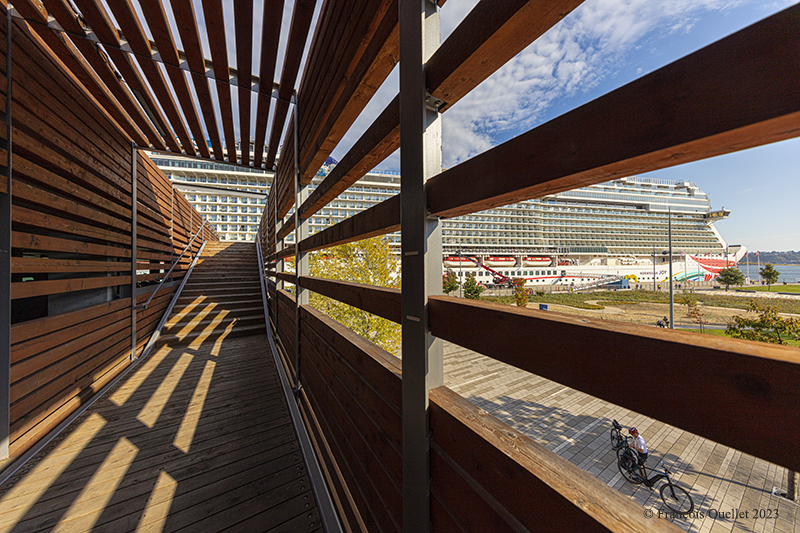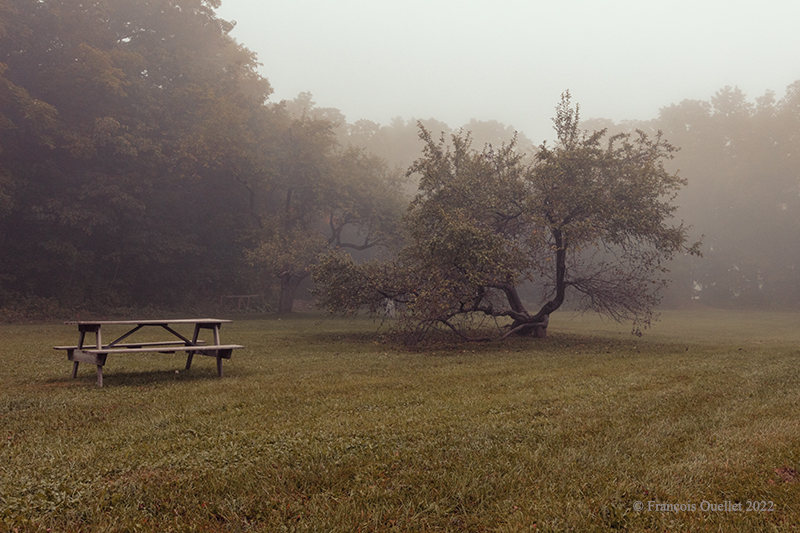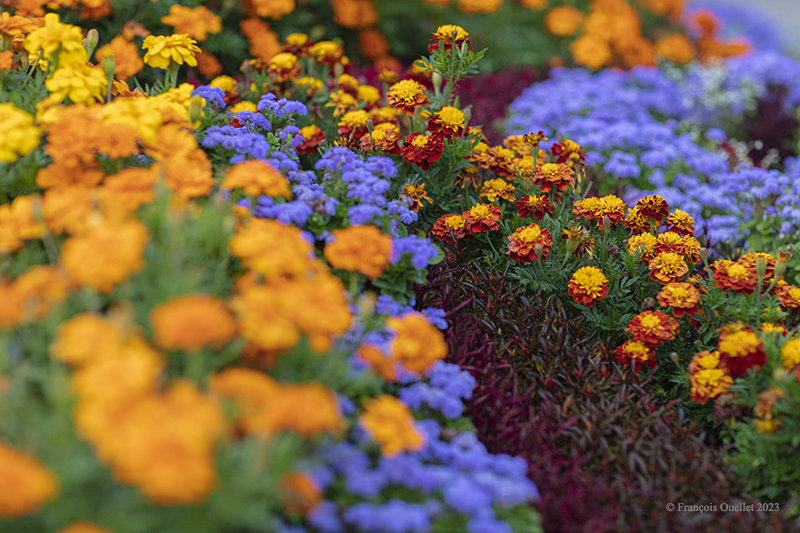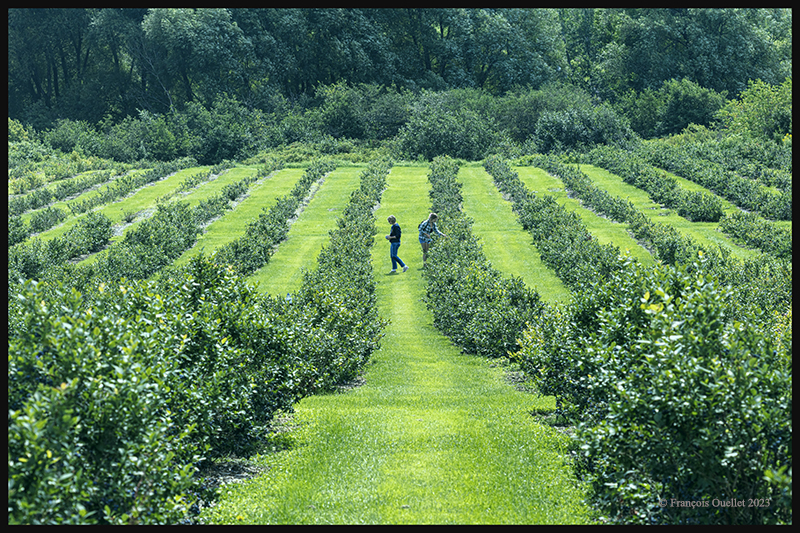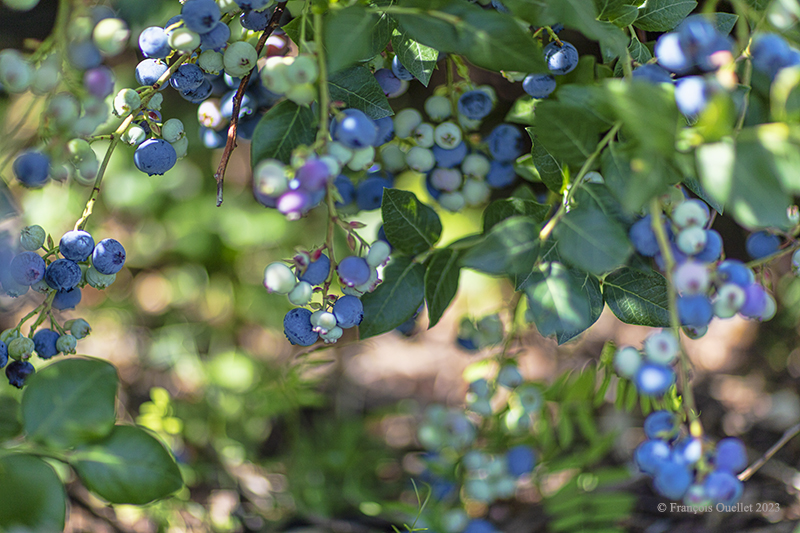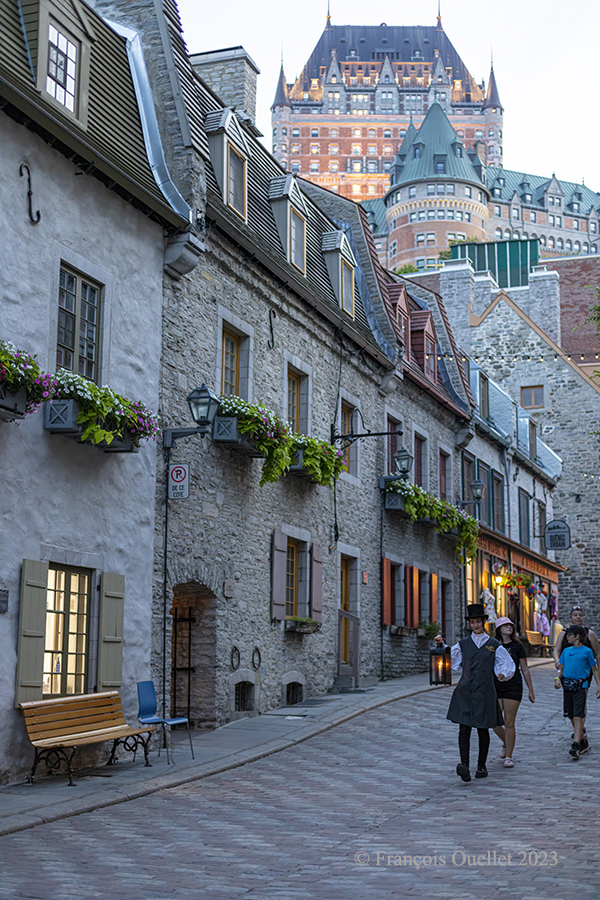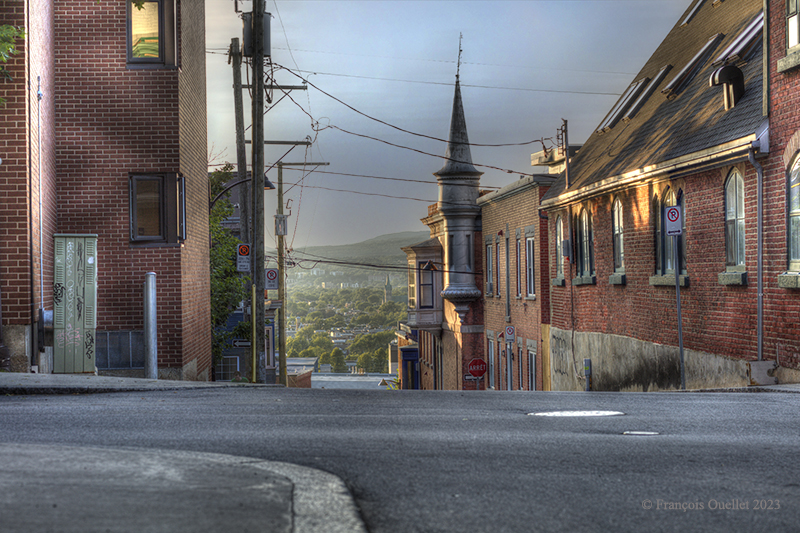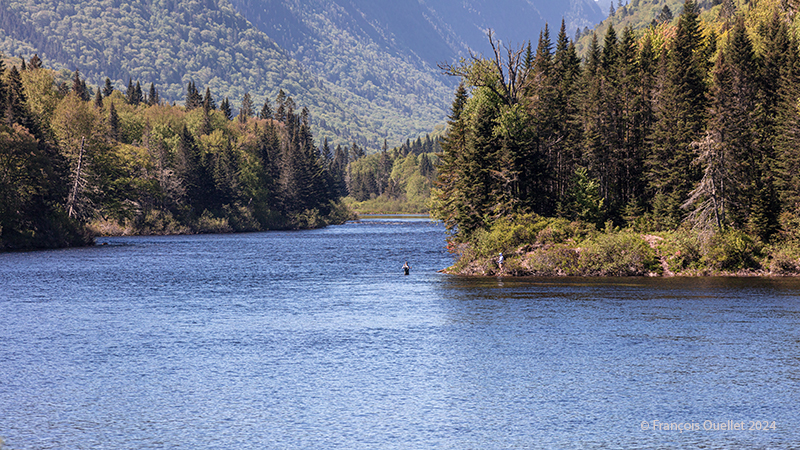
A fisherman sits quietly in the river of the Jacques-Cartier national park casting his line, while his companion watches from the shore. Here, everyone has as much space as they want to enjoy their hobby.
Some photographers use Photoshop’s “dehaze” function to keep the background sharp to infinity. I prefer to retain the natural feel of the scene. The violet-blue landscape visible at the top of the shot helps to capture the distance.
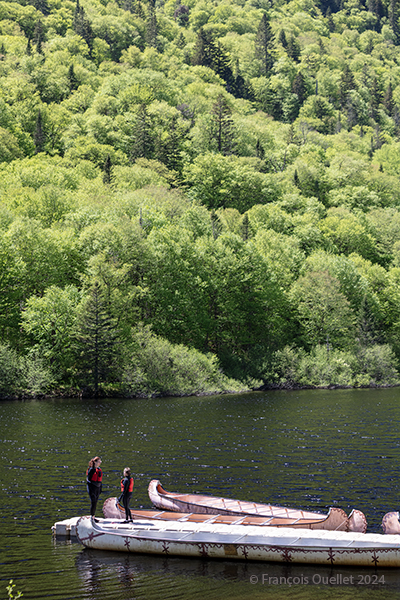
People prepare for their outing in the huge ancestral canoe known as a rabaska. In the foreground, but no longer visible in the photo, was originally a group of vacationers launching an inflatable raft. But all these people were distracting from the main subject. Tight framing eliminated this obstacle.
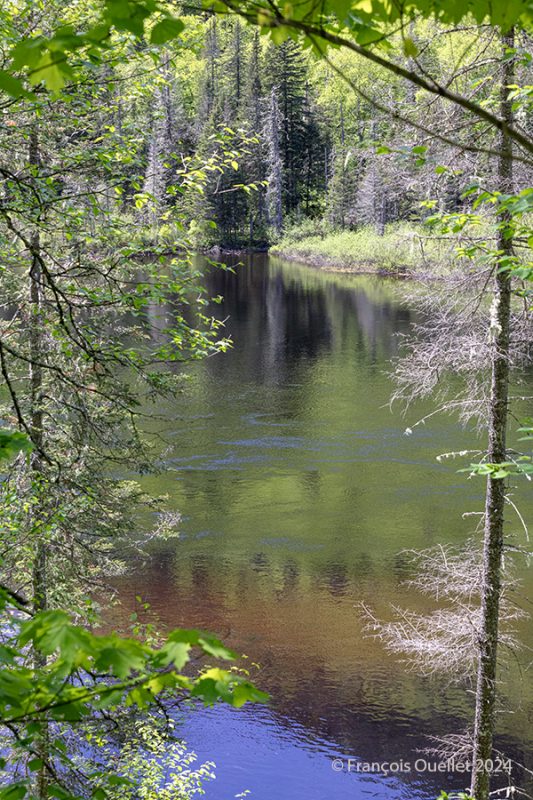
I use the frame-within-a-frame technique to present the multicolored reflections of the river in the photo above. There’s blue, orange and green, outlined by two vertical trunks on either side of the photo and an oblique branch at the top.
I use the same technique in the shot below, but in a less obvious way, as the frame in the foreground remains blurred. Attention is immediately drawn to the canoeists who are just finishing their trip and getting ready to dock.
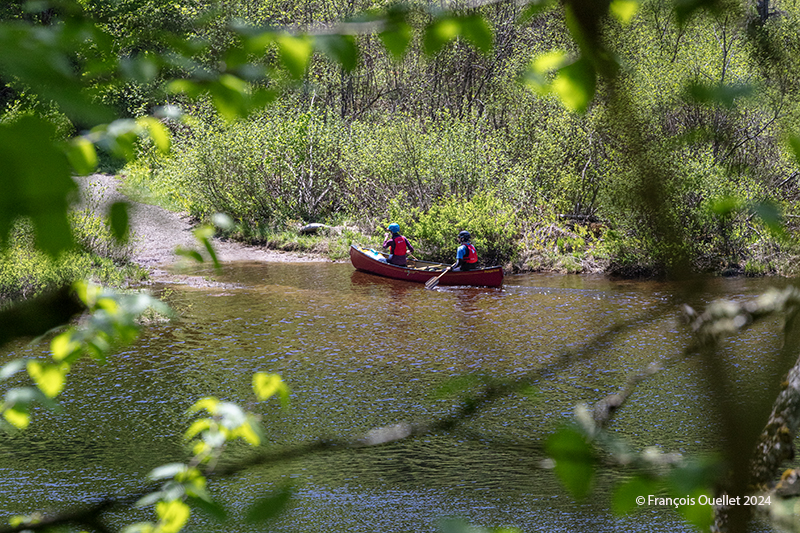
Click on the link for more photos of the province of Quebec on my blog.
